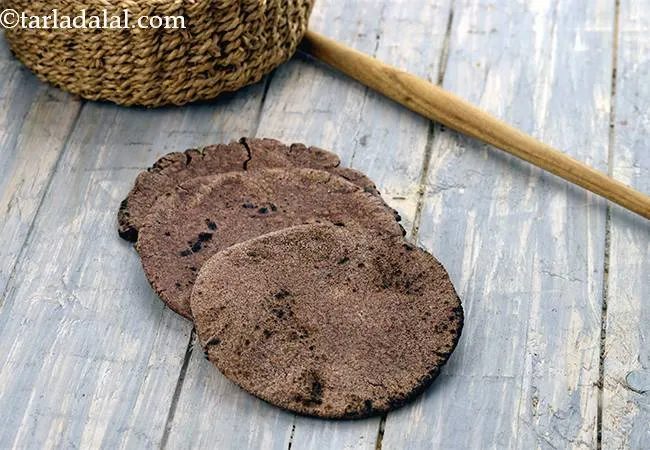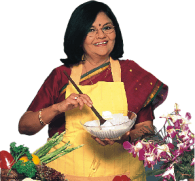Calories in Dapka Kadhi Recipe (Gujaratiâ Dapka Kadhi)
This calorie page has been viewed 6878 times
-17478.jpg?w=800&format=webp)
How many calories does one serving of Dapka Kadhi have?
One serving of Dapka Kadhi gives 305 calories. Out of which carbohydrates comprise 166 calories, proteins account for 62 calories and remaining calories come from fat which is 77 calories. One serving of Dapka provides about 15 percent of the total daily calorie requirement of a standard adult diet of 2,000 calories.
See dapka kadhi recipe. Moong dal dumplings cooked in a traditional Gujarati curd mixture, Dapka Kadhi served with rotlas, green chillies and garlic chutney is a sumptuous and satiating meal worth a million dollars!
When making this dish, ensure that the dapka batter is sufficiently thick. First drop one dapka into the kadhi—if it floats up, it means it is perfect, and you can proceed with the rest. Else, adjust the batter by adding little more besan, or cook the dapkas in a microwave oven before adding to the kadhi.
Is Dapka Kadhi healthy?
Yes, this is healthy. But restrictions apply to some.
Let's understand the Ingredients.
What's good.
1. Curd + Low fat Curds : Curds help in digestion as it has very good bacteria. Probiotics in curds acts as a mild laxative but, in case of diarrhoea and dysentery, it is a boon, if curd is used with rice.They help in weight reduction, good for your heart and build immunity. The only difference between curds and low fat curds is the fat level. Read the benefits of curds to include in your daily diet.
2. Besan : Besan has more good fat than whole wheat flour and also higher protein content. Rich in complex carbohydrates and with a low glycemic index, besan is good for diabetics too. Besan is high in Folate or folic acid, which is important for rapid growth and multiplication of red blood cells and white blood cells (WBC) in the bone marrow. Rich in complex carbohydrates and with a low glycemic index, besan is good for diabetics too. See detailed benefits of besan and why it's good for you.
3. Yellow Moong Dal : The fibre (4.1 g in ¼ cup) present in yellow moong dal prevents the deposition of bad cholesterol (LDL) in the arteries which promotes a healthy heart in turn. Packed with nutrients like zinc (1.4 mg), protein (12.2 mg) and iron (1.95 mg), yellow moong dal helps to maintain the elasticity of your skin and help to keep it moist. Fiber, potassium and magnesium from yellow moong dal will work together to regulate blood pressure and soothe the nerves and is diabetic friendly. See here for details of 7 amazing benefits of yellow moong dal.
Can diabetics, heart patients and over weight individuals have Dapka Kadhi ?
Yes, this recipe is good for diabetics, heart and weight loss but use low fat curds and drop the sugar in the recipe. The fibre (4.1 g in ¼ cup) present in yellow moong dal prevents the deposition of bad cholesterol (LDL) in the arteries which promotes a healthy heart in turn.
The good thing about this kadhi is that the dapkas are not deep fried. We suggest a bajra roti, jowar roti, radish nachni roti recipe , basic ragi roti recipe, and whole wheat roti to make a healthy combination.
Basic Ragi Roti, Nachni Roti
Can healthy individuals have Dapka Kadhi ?
You need to remove or reduce the sugar and then have the kadhi or you can follow this healthy kadhi low fat kadhi recipe.
Dapka Kadhi is high in
1. Protein : Protein is required for the managing the wear and tear of all cells of the body.
2. Folic Acid : Folic acid is an essential vitamin required throughout pregnancy.
3. Magnesium : Magnesium is required for formation of bones and teeth. helps in the metabolism of calcium and potassium.
4. Phosphorous : Phosphorous works closely with calcium to build bones.
5.Vitamin B1 : Vitamin B1 protects nerves, helps in carbohydrate metabolism, prevents heart diseases and helps produce red blood cells.
6. Fiber : Dietary fiber reduce the risk of heart disease, prevent the spike in blood sugar levels and hence super for diabetics. Consume more fruits, vegetables, moong, oats, matki, whole grains.
Note : a recipe is deemed high in a Vitamin or mineral if it meets 20% and above the recommended daily allowance based on a 2,000 calorie diet.
How to burn 305 calories that come from one serving of Dapka Kadhi?
Walking (6 kmph) = 1 hr 32 mins
Running (11 kmph) = 31 mins
Cycling (30 kmph) = 41 mins
Swimming (2 kmph) = 52 mins
Note: These values are approximate and calorie burning differs in each individual.
| Value serving | % Daily Values | |
| Energy | 203 kcal | 10% |
| Protein | 10.4 g | 17% |
| Carbohydrates | 27.7 g | 10% |
| Fiber | 4.67 g | 16% |
| Fat | 5.25 g | 9% |
| Cholesterol | 2.7 mg | 1% |
| VITAMINS | ||
| Vitamin A | 121.6 mcg | 12% |
| Vitamin B1 (Thiamine) | 0.2 mg | 15% |
| Vitamin B2 (Riboflavin) | 0.1 mg | 5% |
| Vitamin B3 (Niacin) | 1.0 mg | 7% |
| Vitamin C | 1.0 mg | 1% |
| Vitamin E | 0.0 mg | 0% |
| Folic Acid (Vitamin B9) | 61.5 mcg | 20% |
| MINERALS | ||
| Calcium | 64.3 mg | 6% |
| Iron | 1.9 mg | 10% |
| Magnesium | 53.2 mg | 12% |
| Phosphorus | 78.7 mg | 8% |
| Sodium | 22.6 mg | 1% |
| Potassium | 428.5 mg | 12% |
| Zinc | 1.0 mg | 6% |
Percent Daily Values are based on a 2000 calorie diet. Your daily values may be higher or lower depending on your calorie needs.

Click here to view Dapka Kadhi ( Gujarati Recipe)
Calories in other related recipes




-11034.jpg?w=400&format=webp)

-9360.jpg?w=400&format=webp)











